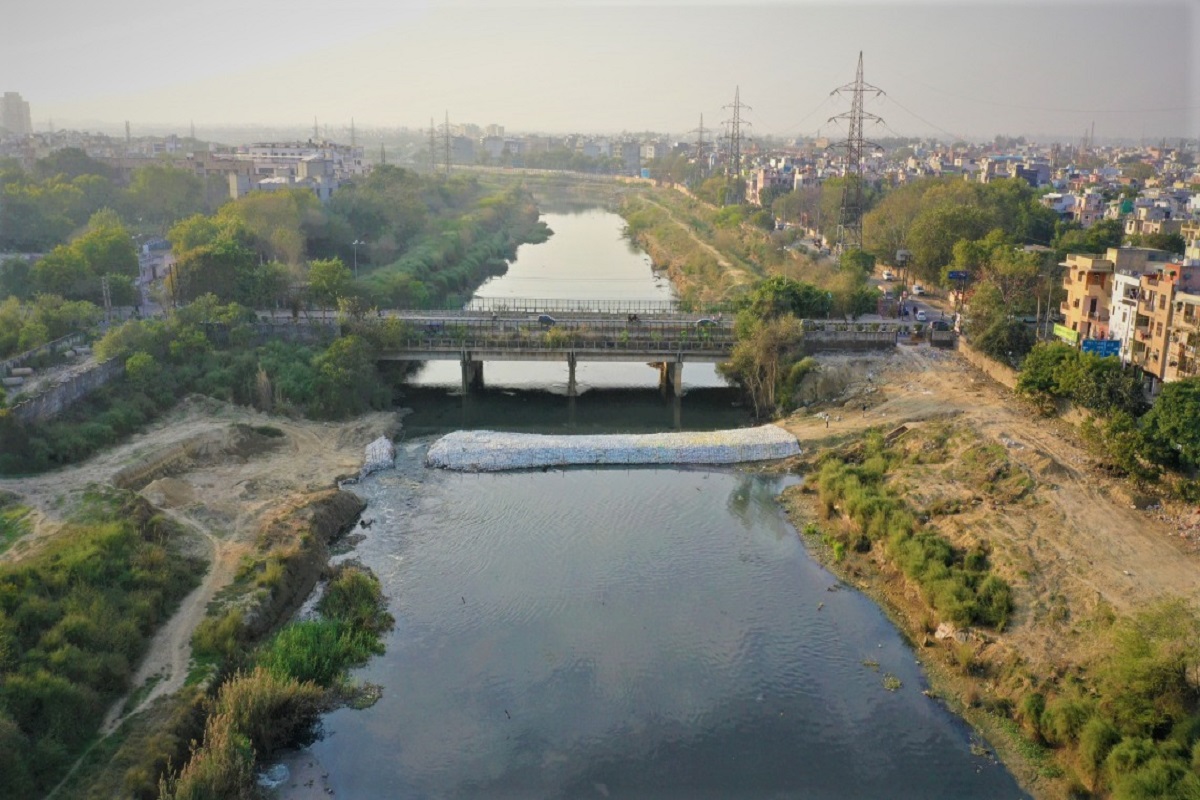As a part of cleaning the Yamuna, the Delhi government today claimed that temporary weirs built on major drains have substantially helped to clean the rains by improving their biochemical oxygen demand (BOD) level and decreasing the number of other pollutants as well in the river.
A weir is a small barrier built across a stream or river that helps to raise the water level slightly on the upstream side. Weirs allow water to pool behind them while allowing water to flow steadily over top of the weir.
Advertisement
Weirs are erected in the mid-flow of the drain to increase the retention of flowing water.
Under this project, construction of 11 weirs has been completed on the Supplementary Drain and 3 weirs have been completed on the Najafgarh Drain, while work on 10 weirs is in progress. The recently constructed weirs have already started to show positive results, and thus the project is bound to turn out tremendously successful in the long run.
Focus is being laid on solving the problem of pollution from drains directly into the Yamuna.
Minister of the Irrigation & Flood Control Department, Satyendar Jain said, “Cleaning the contributing drains of Yamuna will directly lead us towards cleaning the river. Construction of temporary weirs is proving to be an impactful approach to reduce the amount of pollutants contaminating the contributing drains of Yamuna”
Currently, DJB treats the wastewater of the drains falling into both the Najafgarh as well as the Supplementary drain, only by trapping it through its Interceptor Sewer Project (ISP).
Apart from this, measures that are being carried out by the Irrigation and Flood Control department include, desilting of the drains, installation of trash barriers, floating boom to trap floating solid materials, removal of municipal solid waste (MSW) and construction and demolition (C&D) waste from the drains, removal of hyacinth, garbage, patera, and other weeds, claimed Jain.
After implementing the above measures, the Irrigation and Flood Control Department submitted a test report about the impact of these initiatives. The test report of the drain water collected near Rithala STP, Rohini Sector 11 Weir, Rohini Sector 16 Weir, and Rohini Sector 15 Weir shows that there is a drastic reduction in suspended solids after the construction of the temporary weirs. Total suspended solids went down from 166 mg/L in Rithala to just 49 mg/L in Rohini Sector 15.
“There is a substantial reduction in ammonia content in the wastewater as tests found ammonia to be 26 mg/L in Rithala and 18 mg/L in Rohini Sector 15,” stated Delhi government in a press statement.
The biochemical oxygen demand (BOD), which represents the organic material contamination, is found to be reduced after each weirs.











